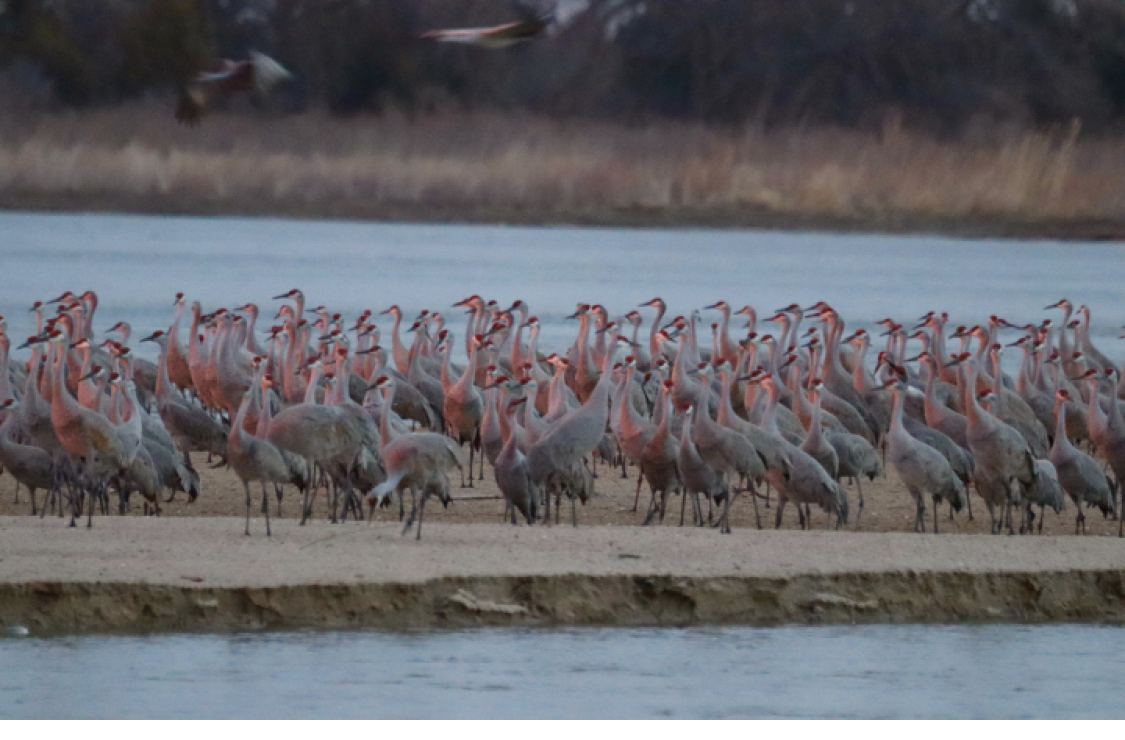Why else drive twohundredseventyfive miles on gym-floor-flat I-80 through corn farms, wind farms, and “mixed precipitation”?
Why else find ourselves somewhere near Gibbon, Nebraska?
Why else the south plain of the great Platte River meandering like veins on hand-back, three bridges to cross, “a mile wide and an inch deep” so said Edgar Nye1?
Why else this black mud-graveled road, slurping into a sunset creeping under clouds on this rain-all-day March nineteenth?
Ah, yes! The cranes. The cranes. The cranes.
Cranes. Cranes. Cranes. Cranes. Cranes.
The sight. Bird strings in the vermillion. Sloppy S’s, L’s, and, V’s. Sketched cross crumbling clouds by the pen of a shaky old god. Lines, squiggles, and a period, dot: a single bird here; and there. Did I say halfmillion altogether?
Wings cup. Big silver birds drop toward knee-deep (for cranes) brown water, change their minds, circle up, then cup again, drop again, land with splashy walk, stop and stand ‘till dawn and flight to corn left in fields by careless combines. Or northeast Siberia to copulate and make more cranes.
The sound. Wing sound. A windstorm? A knockdown fastball much too close? A plane? Superman?
The voices. Ebullient vocabulary of wildness. Conversation? Orders to the ranks? Shrieks for the joy of shrieking.
RTP2 in his Birds of Eastern and Central North America says “VOICE: A shrill, rolling garooo-a-a-a; repeated and bugled in flight.”
That’s not quite right. But I can’t do better. You’ll have to hear it for yourself.

Photo courtesy of Sandy Moffett
References Listed
1 Edgar “Bill” Nye, 1850-1896 , humorist and editor of the Laramie Boomerang, was the first to use this phrase in describing the Platte River, to which he added, “too thin to plow and too thick to drink.”
2 Naturalist Robert Tory Peterson, author of Birds of Eastern and Central North America and other field guides published by Houghton Mifflin Harcourt Brace.


